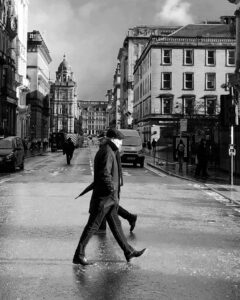Street photography is a genre of photography that captures candid moments in public places. It’s a way to document the human experience, from cultural diversity to social issues and inequalities. Mastering street photography techniques can take your images from ordinary to extraordinary. In this guide, we will explore different techniques for mastering street photography and capturing compelling images.
The Candid Moment
Candid moments are the essence of street photography. Capturing people in their natural environment without them knowing creates a sense of authenticity and spontaneity. To capture candid moments, it’s essential to blend in with the environment and be patient. Techniques for capturing candid moments include using a fast shutter speed to freeze the action, using a long lens to stay hidden, and framing your subject to create a story.
Creative Approaches
Street photography is not just about capturing candid moments; it’s also about being creative. Creative approaches can take your images to the next level and set them apart from the rest. Techniques for adding a creative flair to your images include using reflections, experimenting with different angles, and playing with color and contrast. It’s essential to be willing to take risks and push your boundaries to develop a unique style.
The Art of Observation
Observation is critical to street photography. It requires a deep sense of awareness and the ability to anticipate and capture the decisive moment. Techniques for developing your observational skills include slowing down, immersing yourself in the environment, and paying attention to the details. By practicing observation, you can become more attuned to the world around you and capture moments that might otherwise go unnoticed.
Light and Shadow
Light and shadow play a critical role in street photography. They create mood, drama, and depth in your images. Techniques for using light and shadow include finding the right angle, using backlighting to create silhouettes, and shooting during the golden hour. Post-processing can also enhance your images by adjusting the exposure and contrast to create a more impactful image.
Beyond the Basics: Advanced Techniques
Advanced techniques can take your street photography to the next level. These techniques require a solid foundation of the basics and a willingness to experiment. Techniques for advanced street photography include panning to create motion blur, using slow shutter speeds to create abstract images, and using multiple exposures to create a layered image. It’s essential to develop your personal style and experiment with different techniques to find what works for you.
Ethics and Responsibility
Ethics and responsibility are essential considerations in street photography. Photographers have a responsibility to respect the privacy and dignity of their subjects and to avoid exploiting or sensationalizing their experiences. It’s important to approach sensitive subjects and situations with respect and sensitivity and to consider the potential impact of your images.
Conclusion
Mastering street photography techniques takes practice and patience. It’s essential to develop your observational skills, experiment with different techniques, and develop your personal style. Street photography is a powerful tool for documenting the human experience, and by mastering its techniques, you can create images that tell compelling stories and capture the essence of our society. So grab your camera and start exploring the world around you. Who knows what stories you might uncover?



